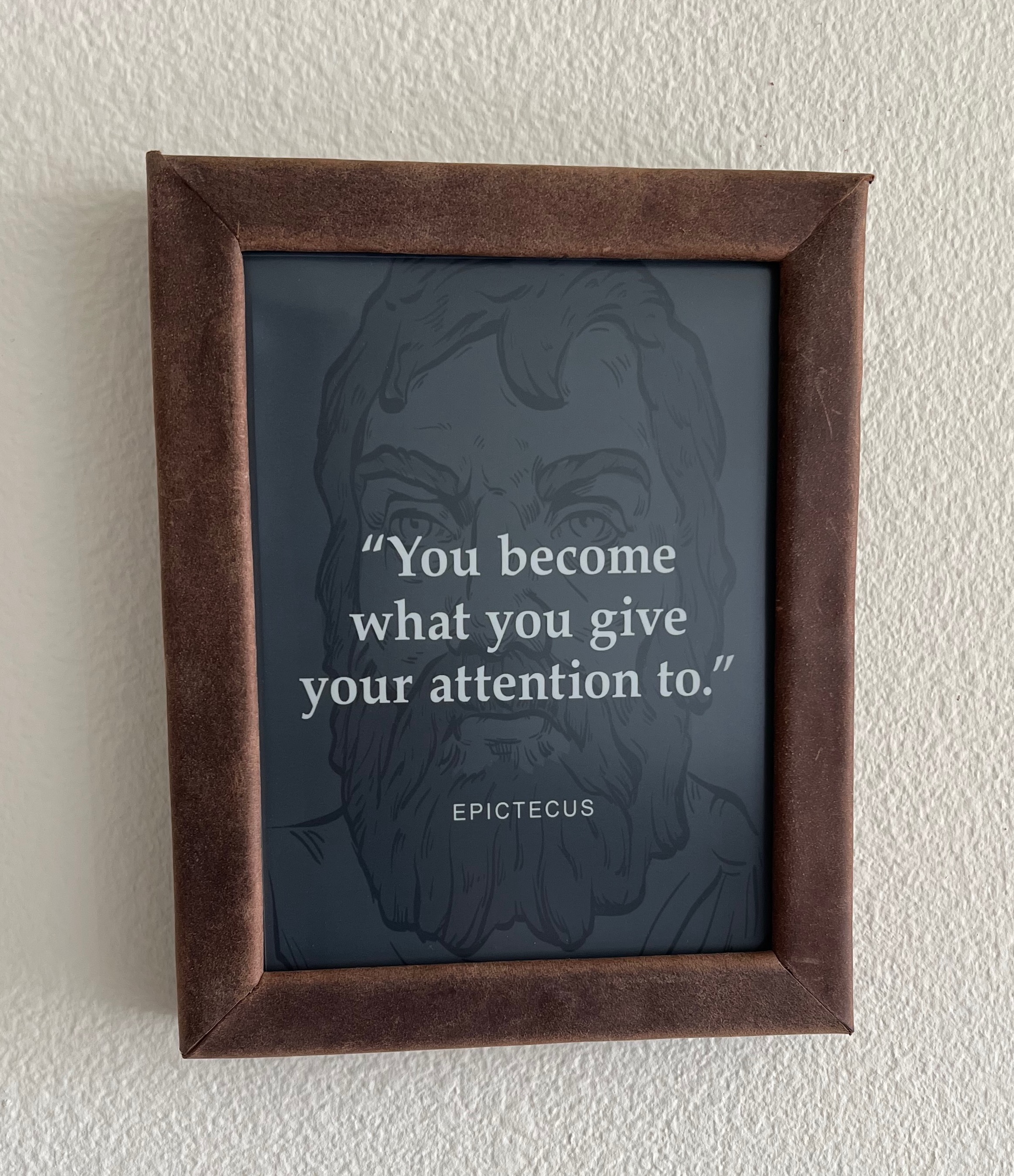stoic-dashboard
Dashboard that displays a new Stoic thought everyday!


The main components of the project are:
- Plastic Logic's Electrophoretic Display (EPD): Similar to an E-ink display; it's optimal for this application as it consumes energy only when the image is updated.
- Adafruit HUZZAH32-ESP32: An ESP32 board. This runs the firmware for the dashboard in MicroPython, and provides functionality like connecting to a WiFi network, pulling image from the server, and sending it to the EPD controller.
- ESP32-EPD Adapter: The original eval-kit from Plastic Logic is powered by an MSP430 MCU. However, I wanted to run it using an ESP32 for features like WiFi connectivity and Python compatibility. So I made this adapter board that stacks on top of the Adafruit HUZZAH32-ESP32 and connects to the FPC that goes to the EPD controller board (Raven), replacing the MSP430 board (Parrot).
- RaspberryPi: It acts as a server that runs 24x7, maintaining a repository of images by pulling from Instagram account @dailystoic and serving it to ESP32.
Other accessories include
- 3.7V LiPo battery
- FFC/FPC extenders + Flex cables to make connecting different boards easier after framing
- Frame using foam-board and leather sheet (because I didn't have access to woodworking tools!)
This repo contains the ESP32 firmware (frontend), RPi server code (backend) and design files for the ESP32-EPD adapter (designs).
backend
Run this code on a permanently powered and internet connected system like a RaspberryPi. If a RaspberryPi isn't available, any computer running Python can be used as a server. Just make sure to update the URL in main.py.
To setup, create a Python venv and install dependencies
cd backend
python -m venv .env
source ./.env/bin/activate
pip install -U pip
pip install -r requirements.txt
and run the server indefinitely.
nohup python server.py &
After a few seconds, there should be images downloaded in backend/image_repo. You can verify that the server is
working well by visiting http://raspberrypi.local:8080 in your browser.
The server maintains a queue of available images from image_repo, popping one out whenever client (ESP32) queries. If
the size of the queue drops below a threshold (default=10), it executes another pull from Instagram to
update image_repo and the queue.
To avoid repeating images, it also maintains a history of previously served images as history.pkl. Delete that file to
recycle old images.
frontend
This is a MicroPython port of the original MSP430 firmware from PlasticLogic (written in C) with some modifications like pulling the image to display from a server on the network instead of reading from an SD-card.
If not done already, follow the steps here to prepare ESP32 for MicroPython.
Create a Python3.7 venv and install dependencies
cd frontend
python3.7 -m venv .env
source ./.env/bin/activate
pip install -U pip
pip install -r requirements.txt
Change WiFi and SSID and password in wifi.json, and run run.sh
./run.sh
This will transfer all frontend code and configs to the ESP32, pull an image from the server, display it on the EPD, and go to deep sleep for approx 24 hours. On wake-up, it will pull and display a new image.
Before running run.sh, make sure that the server is running, else the frontend code will crash because
it can't find server! If that happens, perform a hard reset
ampy --port /dev/cu.SLAB_USBtoUART reset --hard
Changing an image on demand
If you want to change the current image (and understandably don't want to wait 24 hours), ESP32 has a way to wake-up from deep sleep using touch. ESP32 has several capacitive touch-enabled pins; I'm using GPIO #14 that I fly-wired to a corner of the dashboard. Touching that corner wakes up the ESP32 and updates the image. It could take ~20s, but still pretty cool!
designs
I used KiCad for designing the adapter board.
Why Stoic?
Because I find it interesting 🤷
But yeah, technically, it's a generic dashboard, and one can add any number of Instagram accounts as SOURCES in server.py :)
 Ankur Agrawal
Ankur Agrawal